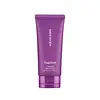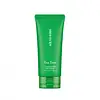What's inside
What's inside
 Key Ingredients
Key Ingredients

 Benefits
Benefits

 Concerns
Concerns

 Ingredients Side-by-side
Ingredients Side-by-side

Water
Skin ConditioningButyloctyl Salicylate
Skin ConditioningEthylhexyl Salicylate
UV AbsorberDibutyl Adipate
EmollientPropanediol
SolventButylene Glycol
HumectantDiethylamino Hydroxybenzoyl Hexyl Benzoate
UV FilterTitanium Dioxide
Cosmetic ColorantBis-Ethylhexyloxyphenol Methoxyphenyl Triazine
Skin ConditioningC12-15 Alkyl Benzoate
AntimicrobialNiacinamide
SmoothingEthylhexyl Triazone
UV AbsorberMethyl Methacrylate Crosspolymer-2
Polyglyceryl-2 Stearate
EmulsifyingSolanum Melongena Fruit Extract
Skin ConditioningAluminum Hydroxide
EmollientBehenyl Alcohol
EmollientGlyceryl Stearate
EmollientStearic Acid
CleansingStearyl Alcohol
EmollientPolyglyceryl-6 Polyricinoleate
EmulsifyingParfum
MaskingSodium Polyacrylate
AbsorbentEthylhexyl Stearate
EmollientAmmonium Acryloyldimethyltaurate/Vp Copolymer
Caprylyl Glycol
EmollientAdenosine
Skin ConditioningEthylhexylglycerin
Skin ConditioningXanthan Gum
EmulsifyingTrideceth-6
EmulsifyingArgemone Mexicana Seed Oil
EmollientPyrus Malus Flower Water
EmollientWater, Butyloctyl Salicylate, Ethylhexyl Salicylate, Dibutyl Adipate, Propanediol, Butylene Glycol, Diethylamino Hydroxybenzoyl Hexyl Benzoate, Titanium Dioxide, Bis-Ethylhexyloxyphenol Methoxyphenyl Triazine, C12-15 Alkyl Benzoate, Niacinamide, Ethylhexyl Triazone, Methyl Methacrylate Crosspolymer-2, Polyglyceryl-2 Stearate, Solanum Melongena Fruit Extract, Aluminum Hydroxide, Behenyl Alcohol, Glyceryl Stearate, Stearic Acid, Stearyl Alcohol, Polyglyceryl-6 Polyricinoleate, Parfum, Sodium Polyacrylate, Ethylhexyl Stearate, Ammonium Acryloyldimethyltaurate/Vp Copolymer, Caprylyl Glycol, Adenosine, Ethylhexylglycerin, Xanthan Gum, Trideceth-6, Argemone Mexicana Seed Oil, Pyrus Malus Flower Water
Water
Skin ConditioningZinc Oxide
Cosmetic ColorantCyclohexasiloxane
EmollientButyloctyl Salicylate
Skin ConditioningPropanediol
SolventPropylheptyl Caprylate
EmollientPolyglyceryl-3 Polydimethylsiloxyethyl Dimethicone
Skin ConditioningDicaprylyl Carbonate
EmollientIsododecane
EmollientCaprylyl Methicone
Skin ConditioningMethyl Methacrylate Crosspolymer
Disteardimonium Hectorite
StabilisingMagnesium Sulfate
Triethoxycaprylylsilane
1,2-Hexanediol
Skin ConditioningSilica
AbrasivePolyglyceryl-2 Dipolyhydroxystearate
Skin ConditioningPolymethylsilsesquioxane
Lauryl Polyglyceryl-3 Polydimethylsiloxyethyl Dimethicone
Skin ConditioningGlyceryl Caprylate
EmollientCaprylyl Glycol
EmollientEthylhexylglycerin
Skin ConditioningSodium Hyaluronate
HumectantTocopherol
AntioxidantPhormium Tenax Leaf Water
AntioxidantCentella Asiatica Extract
CleansingOctyldodecanol
EmollientButylene Glycol
HumectantEchium Plantagineum Seed Oil
Skin ConditioningOcimum Basilicum Flower/Leaf Extract
TonicHelianthus Annuus Seed Oil
EmollientWater, Zinc Oxide, Cyclohexasiloxane, Butyloctyl Salicylate, Propanediol, Propylheptyl Caprylate, Polyglyceryl-3 Polydimethylsiloxyethyl Dimethicone, Dicaprylyl Carbonate, Isododecane, Caprylyl Methicone, Methyl Methacrylate Crosspolymer, Disteardimonium Hectorite, Magnesium Sulfate, Triethoxycaprylylsilane, 1,2-Hexanediol, Silica, Polyglyceryl-2 Dipolyhydroxystearate, Polymethylsilsesquioxane, Lauryl Polyglyceryl-3 Polydimethylsiloxyethyl Dimethicone, Glyceryl Caprylate, Caprylyl Glycol, Ethylhexylglycerin, Sodium Hyaluronate, Tocopherol, Phormium Tenax Leaf Water, Centella Asiatica Extract, Octyldodecanol, Butylene Glycol, Echium Plantagineum Seed Oil, Ocimum Basilicum Flower/Leaf Extract, Helianthus Annuus Seed Oil
Ingredients Explained
These ingredients are found in both products.
Ingredients higher up in an ingredient list are typically present in a larger amount.
Butylene Glycol (or BG) is used within cosmetic products for a few different reasons:
Overall, Butylene Glycol is a safe and well-rounded ingredient that works well with other ingredients.
Though this ingredient works well with most skin types, some people with sensitive skin may experience a reaction such as allergic rashes, closed comedones, or itchiness.
Learn more about Butylene GlycolButyloctyl Salicylate is a chemical UV filter structurally similar to octisalate. It is a photostabilizer, SPF booster, emollient and solvent. This ingredient helps evenly spread out ingredients.
According to a manufacturer, it is suitable for pairing with micro Titanium Dioxide, Zinc Oxide, and pigments.
Photostabilizers help stabilize UV-filters and prevents them from degrading quickly.
Learn more about Butyloctyl SalicylateCaprylyl Glycol is a humectant and emollient, meaning it attracts and preserves moisture.
It is a common ingredient in many products, especially those designed to hydrate skin. The primary benefits are retaining moisture, skin softening, and promoting a healthy skin barrier.
Though Caprylyl Glycol is an alcohol derived from fatty acids, it is not the kind that can dry out skin.
This ingredient is also used as a preservative to extend the life of products. It has slight antimicrobial properties.
Learn more about Caprylyl GlycolEthylhexylglycerin (we can't pronounce this either) is commonly used as a preservative and skin softener. It is derived from glyceryl.
You might see Ethylhexylglycerin often paired with other preservatives such as phenoxyethanol. Ethylhexylglycerin has been found to increase the effectiveness of these other preservatives.
Propanediol is an all-star ingredient. It softens, hydrates, and smooths the skin.
It’s often used to:
Propanediol is not likely to cause sensitivity and considered safe to use. It is derived from corn or petroleum with a clear color and no scent.
Learn more about PropanediolWater. It's the most common cosmetic ingredient of all. You'll usually see it at the top of ingredient lists, meaning that it makes up the largest part of the product.
So why is it so popular? Water most often acts as a solvent - this means that it helps dissolve other ingredients into the formulation.
You'll also recognize water as that liquid we all need to stay alive. If you see this, drink a glass of water. Stay hydrated!
Learn more about Water